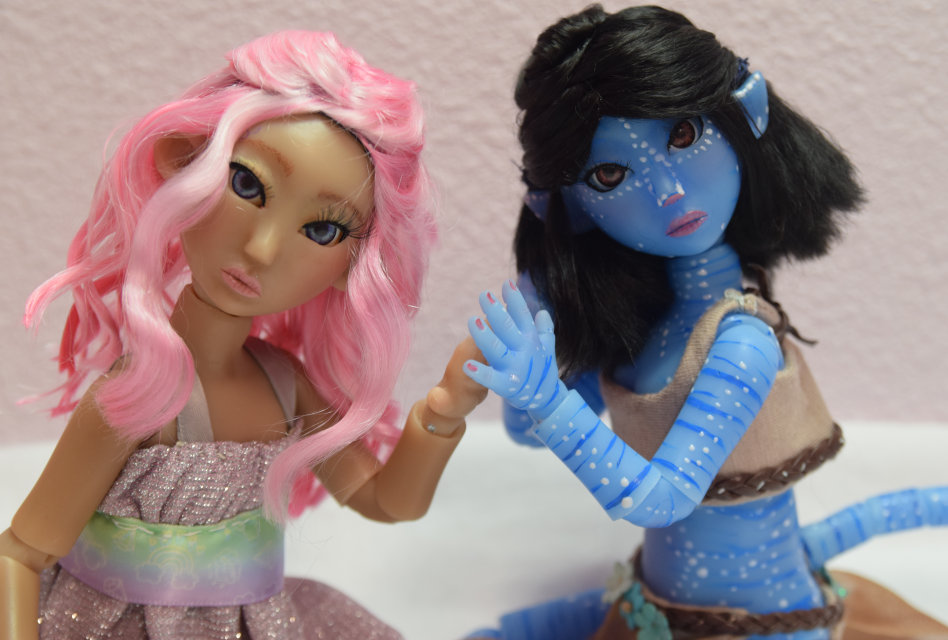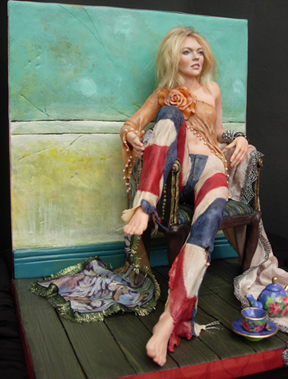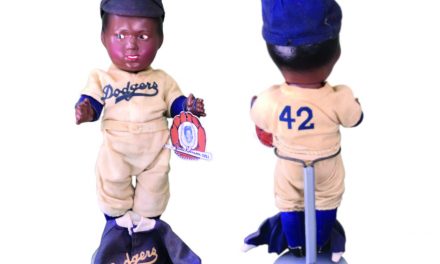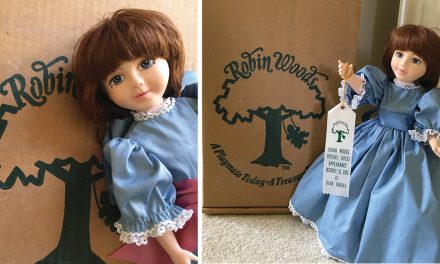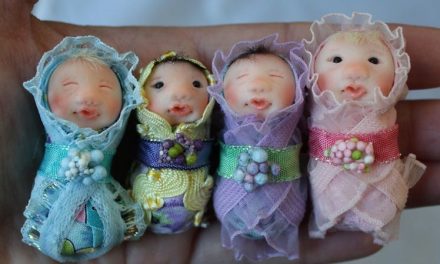By Virginia Comish
Doll artist Virginia Comish has spent about a decade making baby dolls, first making vinyl reborn dolls, later switching to working on silicone baby dolls, including sculpting a doll for reproduction in silicone. Most recently, though, her enjoyment of collecting ball-jointed dolls (BJDs) has led her to make her own — not just the sculpts, but making the molds and casting the dolls herself.
She graciously took the time to tell DOLLS readers about her reasons and goals in this new endeavor, in her own words:
Well, I’ve been a silicone doll artist for a few years now, and I really enjoy bringing the babies to life and the happiness they bring to people. I will continue working on silicones, as well, but what prompted me to create my own BJDs is that there’s so much more room for creativity and for creating unique fantasy characters. I’ve done a few fantasy silicones, but I had a hard time finding buyers for them, and the possibilities of all I can do with BJDs is very exciting for me.
I began learning to make my own BJDs about six months ago or so. I read a lot of tutorials and watched YouTube videos of other artists’ methods — and had a lot of trial and error. This doll I have made, Alixie, which I’m hoping to release soon, will be my first “official” release. I’ve made two others so far — the first one was just terrible, and the second one, which is shown on my website, I named Learning Curve Girl. I’ve just been teaching myself what I should do differently next time and what I can do better, and I’m very proud of this new sculpt I have.

I’m sculpting the dolls with Sculpey clay and have learned to make molds and cast the dolls myself. It was a completely new experience for me! Although I have sculpted baby dolls to be cast into silicone, I never undertook learning to pour my own silicone dolls, so it was a completely new experience for me. I did a lot of research and tried several materials before I found which products worked best for me. And I actually really enjoy the molding and pouring process. I honestly didn’t consider sending my BJD sculpts to be reproduced by someone else. This may sound silly, but I love that the doll is completely my creation, every step of the way.
In one sense, my experience as a vinyl and then silicone artist helped in trying to get good proportions and lifelike features, but at the same time it’s a whole new ball game. Instead of trying to make a baby look as realistic as possible, the BJD’s can be less realistic but still beautiful. I’ve always loved learning different forms of art — I was an oil painter for a few years before I discovered making dolls. Overall I just want to be able to make someone smile with my art, and one of my favorite things is knowing someone loves a doll I’ve made, no matter what medium it is.
I’ve collected both vinyl and resin BJDs for a few years now, so I used them as a kind of guide when it came to making the joints work properly. I spent a lot of time looking at dolls by other artists and deciding which kinds of joints would work for me and the best way to go about making them. On Alixie, I think I must have sculpted her knees at least three times because I didn’t like the way the joints came out. And even on my two previous dolls, I cast a few of them even though I knew they had flaws, just so I could practice articulating the joints, find the best way to go about stringing the dolls, and seeing how I could make them better next time.
The best advice I could give to someone else who wanted to start making BJDs is to start small. Like sculpt just the head, and then practice the molding and pouring before moving on to the body. That would let you get comfortable with the process and work out the kinks before using all the materials needed to make a whole doll. Also, there are no shortcuts — it’s definitely an investment. On my first attempt, I tried it without the pressure pot or vaccum chamber, and those are definitely essentials!
Working with resin BJDs is completely different from my previous vinyl and silicone babies. Not just because the resin BJDs can be any age but also because there is more room for variation. Instead of painting a doll to look as realistic as possible, I try to make my BJDs move realistically.
For Alixie, I used Smooth-On products for all the materials needed. She’s poured in Smooth Cast 327 with So Strong urethane colorants. She’s 10 inches tall, with 10 mm eyes and wig size 4-5 inch. Eventually I want to offer more skin tone options, but this edition will be a choice of either Caucasian or blue, with the option of an added tail. I have completed one of each color, including making the wigs, but will be selling the rest of the edition blank so people can do their own face-ups and body finishes. I’m not sure how large her edition will be — basically, until the mold gives out. If it seems people are very interested in her, I may re-mold. I’m hoping to have Alixie ready for release by the end of March or early April.
Find out more at Virginia Comish’s website

